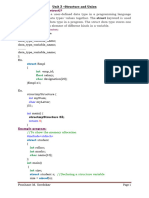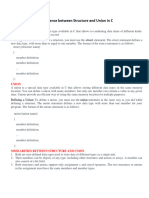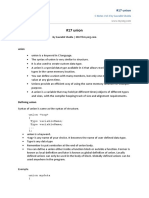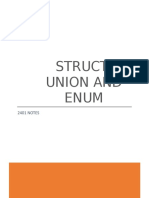0% found this document useful (0 votes)
14 views3 pagesStructure vs Union in C Explained
A structure groups related data under one name while a union uses the same memory location for different types of data. Structures store each member in its own memory location while unions only allocate space for the largest member.
Uploaded by
preetkajaaduCopyright
© © All Rights Reserved
We take content rights seriously. If you suspect this is your content, claim it here.
Available Formats
Download as PDF, TXT or read online on Scribd
0% found this document useful (0 votes)
14 views3 pagesStructure vs Union in C Explained
A structure groups related data under one name while a union uses the same memory location for different types of data. Structures store each member in its own memory location while unions only allocate space for the largest member.
Uploaded by
preetkajaaduCopyright
© © All Rights Reserved
We take content rights seriously. If you suspect this is your content, claim it here.
Available Formats
Download as PDF, TXT or read online on Scribd
/ 3

























































